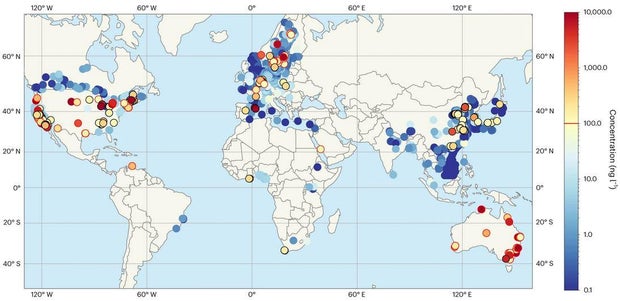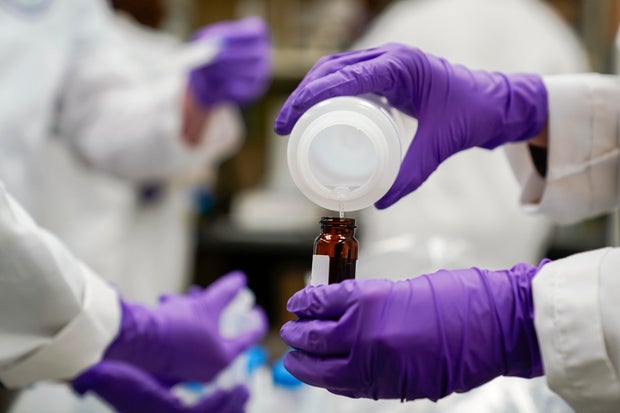Sydney — Dangerous concentrations of long-lived “forever chemicals” have been found in surface water and groundwater around the world, according to a study released in April that showed Australia, the United States and Europe as hotspots.
An article published in the magazine Natural Geosciences analyzed data from 45,000 water samples around the world and found that a “substantial fraction” had levels of PFAS – per- and polyfluoroalkyl substances – above recommended levels.
Found in everyday products such as non-stick frying pans, food packaging and waterproof. clothesThe substances have been linked to serious health problems, including cancer and birth defects.
They have been found everywhere from turtle eggs to Antarctic snow, but the most recent study showed they were prevalent in surface and groundwater used by humans for drinking.
“Many of our water sources are above regulatory limits for PFAS,” said Denis O’Carroll, one of the study’s authors and a professor at the University of New South Wales in Australia.
Natural Geosciences
O’Carroll said it was already known that thousands of types of forever chemicals were “pervasive in the environment,” but he expressed shock at how much higher the sampled levels were compared to recommended levels; “We are talking about above 5% and exceeding 50% in some cases.”
The investigation found that 69% of groundwater samples from around the world exceeded Canadian minimum standards and 6% of samples exceeded EU standards.
Australia, China, the United States and parts of Europe have been shown to be global hotspots for high concentrations of PFAS.
A separation to study published in the summer of 2023 found that nearly half of the tap water flowing into U.S. homes was estimated to have one or more PFASof which there are more than 12,000.
Joshua A. Bickel/AP
The new study acknowledged, however, that locations with the highest measured concentrations of PFAS were also areas with the highest levels of testing, and with further investigation, comparable results could be found around the world.
PFAS is considered to be widespread throughout the world, but the extent of contamination on the land surface and in waterways and water supplies is not known.
Canada, the United States, the European Union and Australia have begun restricting the use of PFAS amid health and environmental concerns.

























